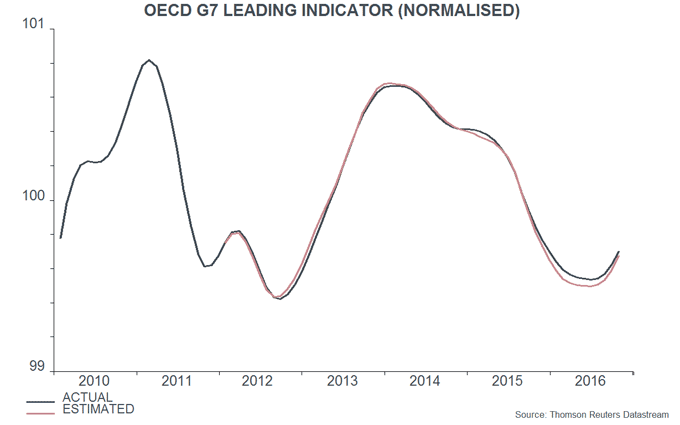Global narrow money trends suggesting spring 2017 growth peak
OECD leading indicator data for October released yesterday support the forecast here of a global economic “boomlet” in early 2017. Global real narrow money trends suggest that momentum will peak in the spring but are not yet warning of subsequent weakness.
The OECD presents its leading indicators in detrended form, meaning that a rise signals above-trend future growth. A post a fortnight ago suggested that the G7 indicator would strengthen significantly in October, while monthly changes for July-September would be revised higher, based on data available then. The actual numbers were close to the estimates presented in the post – see first chart. 
The indicators for all the G7 economies bar Italy increased in the latest three months, with the largest gains in the UK, Germany and the US. The indicators for China and other major emerging economies, meanwhile, started rising earlier and continued to strengthen in October – see the OECD's release.
The second chart shows six-month changes in G7 plus E7 industrial output, a trend-restored leading indicator derived from the OECD data and real narrow money. The recent pick-up in industrial activity was signalled by a rise in real money growth from August 2015. The positive monetary signal was confirmed by a rise in leading indicator momentum from December 2015.
Six-month real narrow money growth appears to have reached a peak in August 2016. Allowing for an average nine-month lead from money to activity, this suggests a peak in industrial output growth around May 2017. Such a scenario would be confirmed by a topping-out of leading indicator momentum in late 2016 / early 2017.
Real money growth has not fallen back sufficiently to suggest a significant economic slowdown after spring 2017. With leading indicator momentum still rising, a pro-cyclical investment stance probably remains warranted.

Reader Comments